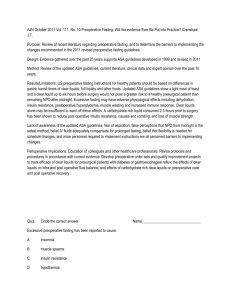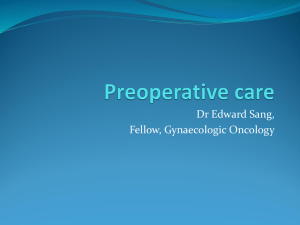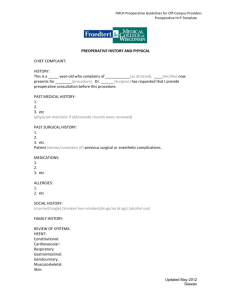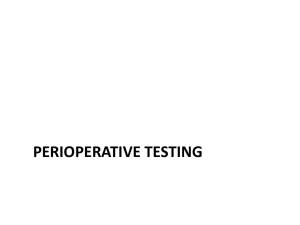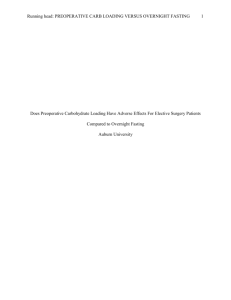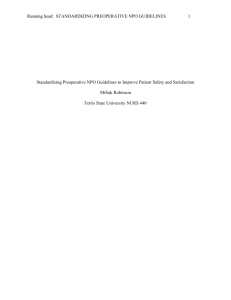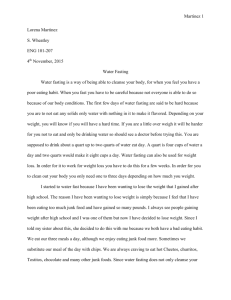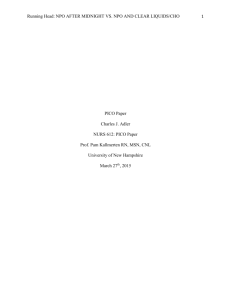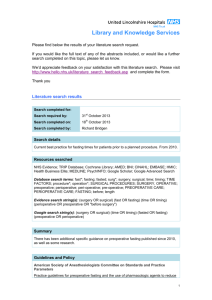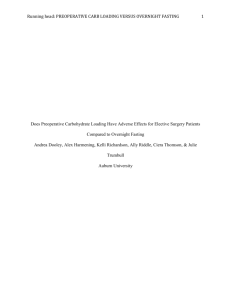Preoperative Fasting Information Sample (Word Doc)
advertisement
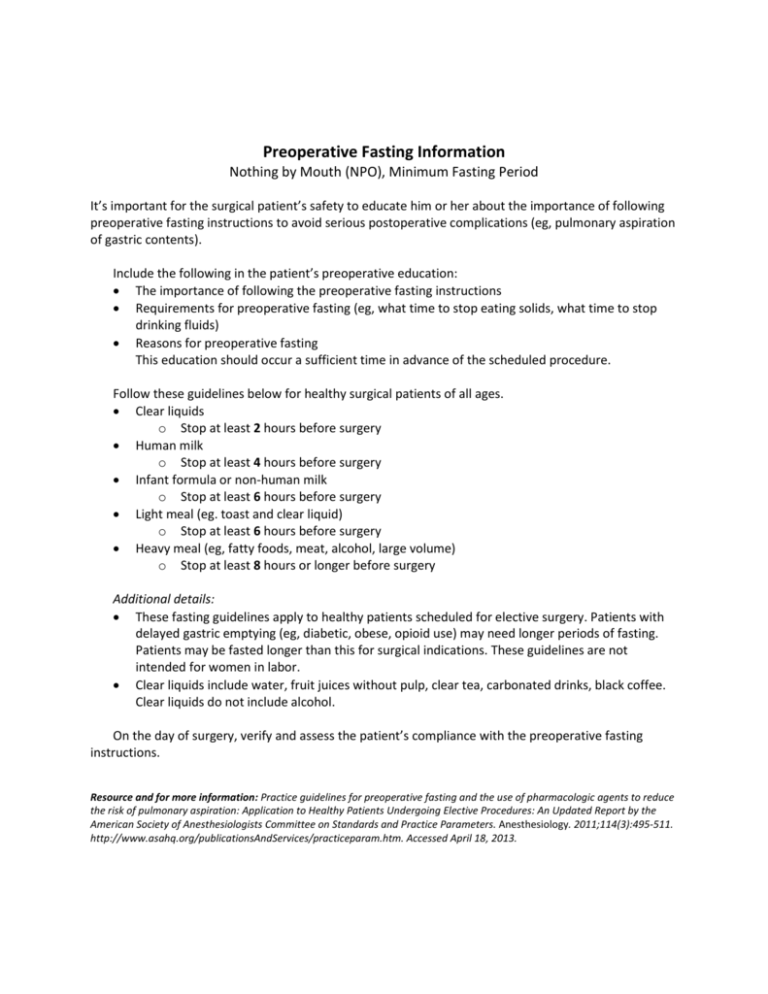
Preoperative Fasting Information Nothing by Mouth (NPO), Minimum Fasting Period It’s important for the surgical patient’s safety to educate him or her about the importance of following preoperative fasting instructions to avoid serious postoperative complications (eg, pulmonary aspiration of gastric contents). Include the following in the patient’s preoperative education: The importance of following the preoperative fasting instructions Requirements for preoperative fasting (eg, what time to stop eating solids, what time to stop drinking fluids) Reasons for preoperative fasting This education should occur a sufficient time in advance of the scheduled procedure. Follow these guidelines below for healthy surgical patients of all ages. Clear liquids o Stop at least 2 hours before surgery Human milk o Stop at least 4 hours before surgery Infant formula or non-human milk o Stop at least 6 hours before surgery Light meal (eg. toast and clear liquid) o Stop at least 6 hours before surgery Heavy meal (eg, fatty foods, meat, alcohol, large volume) o Stop at least 8 hours or longer before surgery Additional details: These fasting guidelines apply to healthy patients scheduled for elective surgery. Patients with delayed gastric emptying (eg, diabetic, obese, opioid use) may need longer periods of fasting. Patients may be fasted longer than this for surgical indications. These guidelines are not intended for women in labor. Clear liquids include water, fruit juices without pulp, clear tea, carbonated drinks, black coffee. Clear liquids do not include alcohol. On the day of surgery, verify and assess the patient’s compliance with the preoperative fasting instructions. Resource and for more information: Practice guidelines for preoperative fasting and the use of pharmacologic agents to reduce the risk of pulmonary aspiration: Application to Healthy Patients Undergoing Elective Procedures: An Updated Report by the American Society of Anesthesiologists Committee on Standards and Practice Parameters. Anesthesiology. 2011;114(3):495-511. http://www.asahq.org/publicationsAndServices/practiceparam.htm. Accessed April 18, 2013.
